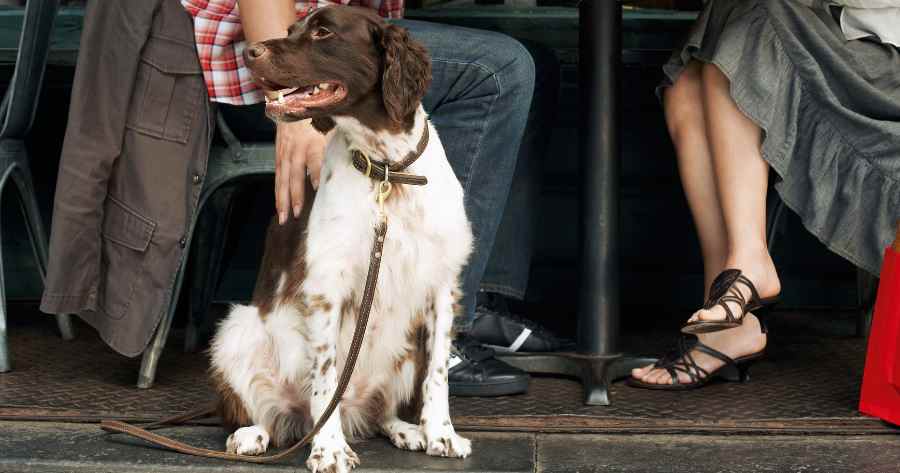
It’s that time of the year. We can finally wave goodbye to winter and start thinking about getting out and about with our dogs again – or maybe for the first time – for some quality socialisation.
Depending on your preference and where you live, this could be long country walks with friends, sitting outside a coffee shop catching up on gossip, or visiting your local pub garden for some lunch, but whatever your choice, you want to take your dog with you.
So how do you make sure your dog is ready for some outdoor socialising?
The short answer is… Start now. Having a dog you can take anywhere takes preparation, training, a healthy dose of realism (just because you want to take your dog to the pub, doesn’t mean they want to go!) and knowing when to advocate for your dog.
Dog walks with friends
After a wet, muddy, and cold winter, long dog walks become a real joy again. They’re also a great time to meet friends and walk your dogs together.
Most dogs will enjoy and cope with this kind of socialising well.
Should I?
- Is your dog relaxed and happy around other dogs?
- Is your friend’s dog relaxed and happy around other dogs?
If the answer to both is yes, then yes.
Manage the day
- If your dog hasn’t met your friend’s dog before, or they haven’t seen each other for a while, start their socialisation by introducing or reintroducing them.
- Your first walk should be on lead and without any formal introductions.
- Meet somewhere neutral (like the car park or the start of the walk).
- Arrive with your dog on their harness and lead as usual.
- Set off on your walk together without any canine introductions.
- Start with a bit of distance between the dogs, and if all is going well, progress to parallel walking.
- This gives both dogs the chance to see each other, get to know each other, get the scent of each other – and relax with each other, without the pressure of being forced to interact straight away.
- If this goes well, plan another meeting and start the same way but sometime during the walk, you can let the quieter dog off the lead.
- Soon, as long as the dogs are happy, you should be able to have both dogs off the lead, interacting freely.
When to advocate for your dog
- Do not let your dog go up to other dogs who are walking close to their owners or on lead. Socialisation doesn’t mean your dog will like every other dog, or them your dog. They’re actually selectively social, so don’t always appreciate these unexpected interactions – and you want to avoid any canine arguments that could affect your dog’s behaviour towards other dogs in the future.
- Avoid unknown dogs where possible – and ask owners to call their dogs back or put them on the lead if they look like they’re going to pester your dog.
A coffee catch-up with friends
There are some great cafes around where coffee, cake and a chat are a real delight – and many have spaces that are dog friendly. But how do you get them ready for this kind of socialisation?
Should I?
- If your dog is able to settle quietly, even in strange places and with distractions, and is friendly around strange people and dogs, then this could be good outing for you both.
- Consider if your dog will enjoy this kind of outing. While we might think this is an enjoyable way to pass an hour or two, our dogs might have a very different view.
- Is your dog is a social butterfly? Or at least a laid-back pup who doesn’t react to novelty (whether new situations, new people, new dogs or unusual sights, sounds and sniffs)? Some dogs can be quite happy in this kind of environment, while others find it stressful.





